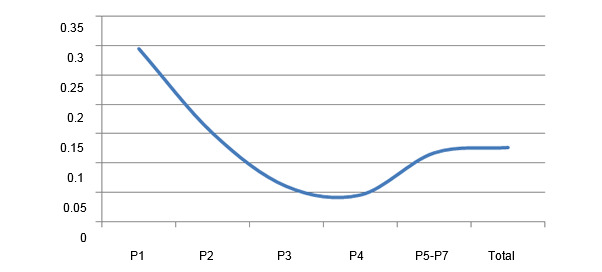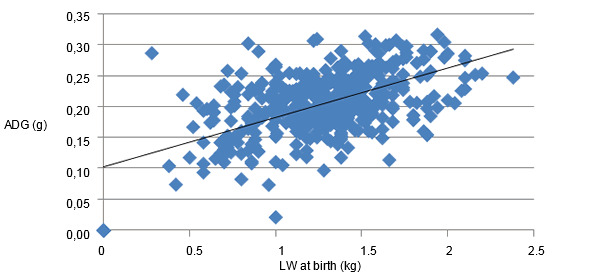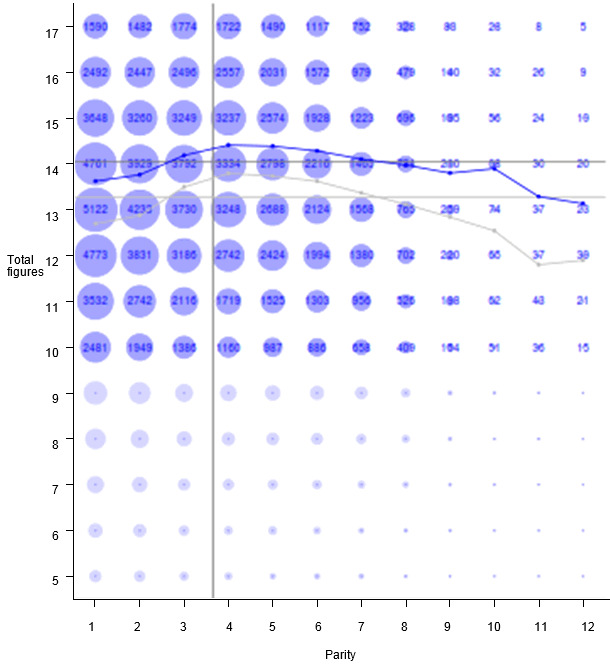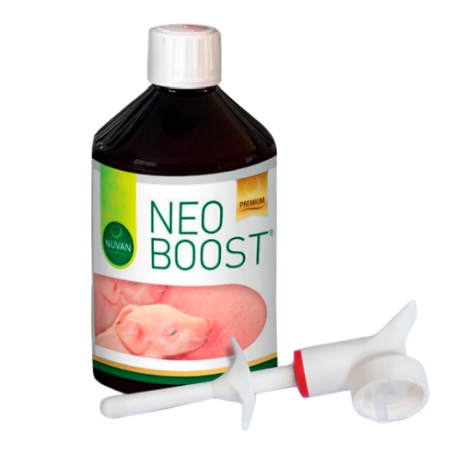The improvement, in the last years, in the reproductive efficiency leads us to obtain, with an increasingly higher frequency, very big litters that are the starting point for obtaining a higher number of weaned piglets and, finally, a higher number of sold pigs, whereas they are sold when weaned, at 20 kg LW or as fattened animals. Average prolificacies above 15 born and 13 weaned piglets are starting to be seen with a relative high frequency. In order to attain these results there is a good number of factors acting and interacting, and we will only achieve excellent reproductive performances with a good control of all of them.
Among these factors, there are some that we can control almost completely, some that we will only be able to guarantee partially, and others that are quite out of our reach. In particular, obtaining a big litter will depend on the prolificacy of the sow, normally guaranteed to a certain extent by the company that supplies us with the swine genetics; on the suitable preparation of the gilt as a breeding animal, especially if we raise it in our farm (health and nutritional aspects, mainly); on the age at its first mating; on the quality of the heat detection process; on the feeding and the handling/management during the gestation (especially during the last third of the pregnancy); and lastly, on the attentions during the farrowing and the lactation stage. Among all these processes, we are going to check the influence of two of them, whose importance is growing among the current production tendencies: the percentage of small piglets and the parity of the sow.

It is well known that the genetic improvement in the last years has been offering us the possibility of obtaining increasingly bigger litters (Foxcroft, 2008), but this improvement seems to be linked to a lower uniformity of the weights at birth, mainly due to the appearance of a percentage of small piglets that is higher than desirable and that in some cases are in the verge of viability (< 850 g), and whose percentage can be of about 13 % (PigCHAMP Pro and Consuitec, unpublished data), as shown in Graph 1.
Graph 1. Percentage of small piglets according to the parity.

It is advisable to remember the strong relationship between the weight at birth and the subsequent growth of the piglet (Graph 2):
Graph 2. Relationship between the LW at birth and the subsequent growth.

Source: PigCHAMP Pro Europa and Consuitec
On the other hand, the effect on the sensitivity to diseases and the worsened performance of the piglets born to young sows, especially primiparous sows (Miller et al., 2008), is well known. It seems that both factors, especially when combined, can have a considerable effect on the results obtained in the farrowing rooms and in the following stages.
The updated prolificacy curves show that the average values and those of high performance farms follow a very similar pattern (Graph 3).
Graph 3. Prolificacy curves, globally and in hyperprolific sows.

Source: BD PigCHAMP Pro Europa, corresponding to 154,506 farrowings in September 2012
When we add information regarding the weight at birth and at weaning, and the growth of the piglets, we see some very interesting effects, because young sows (parity 1 and 2) generally produce piglets that are somewhat lighter than those born to adult sows (Table 1).
Table 1. Live weights (kg) at birth (LW 0) and at weaning (LW w), and growth (ADG, gr) according to the parity number.

| LW 0 | LW w | ADG | |
| P1 | 1.23 a | 6.78 a | 196.0 a |
| P2 | 1.25 a | 6.98 a | 202.0 ab |
| P3 - P7 | 1.32 b | 7.39 b | 215.6 b |
| EEM | 0.023 | 0.179 | 6.192 |
Source: PigCHAMP Pro Europa and Consuitec
This lower weight at birth turns into a lower subsequent growth and, therefore, into a lower weight at weaning than in the piglets born to adult sows. It is interesting to see how markedly this effect remains when we divide the piglets according to categories (small: < 0.850 kg, medium: 0.850-1.5 kg, and big: > 1.5 kg), as Table 2 shows:
Table 2. Liveweights (kg) at birth (LW 0), at weaning (LW w), and subsequent growth (ADG, gr) according to the weight category at birth (small, medium or big)
| LW 0 | LW w | ADG | |
| Small (< 0.850 kg) | 0.76 | 5.73 | 175.5 |
| Medium (0.850-1.5 kg) | 1.28 | 7.13 | 206.9 |
| Big (> 1.5kg) | 1.75 | 8.28 | 231.1 |
| EEM | 0.023 | 0.185 | 6.384 |
Source: PigCHAMP Pro Europa and Consuitec
When we also combine the weight of the piglet and its subsequent performance according to the parity number, we see that the previous effect is maintained, because the big piglets and those born to mature sows grow more, but there is a tendency towards the adult sows being able to wean the small piglets with higher weights, as shown in Table 3.
Tables 3, 4 and 5. Liveweights (kg) at birth (LW 0) and at weaning (LW w), and subsequent growth (ADG, gr) according to the category regarding the weight at birth (small, medium or big) and to the parity number of the sows.
| Small (< 0.850 kg) | LW 0 | LW w | ADG |
| P1 | 0.698 | 5.01 | 150.8 |
| P2 | 0.660 | 5.68 | 177.2 |
| P3 - P7 | 0.704 | 5.97 | 186.7 |
| EEM | 0.033 | 0.373 | 13.13 |
| P Parity | 0.4972 | 0.1218 | 0.0883 |
Source: PigCHAMP Pro Europa and Consuitec
| Medium (0.850-1.5 kg) | LW 0 | LW w | ADG |
| P1 | 1.17a | 6.87 | 202.3 |
| P2 | 1.24a | 6.95 | 200.9 |
| P3 - P7 | 1.32b | 7.28 | 211.0 |
| EEM | 0.029 | 0.193 | 6.48 |
| P Parity | 0.0001 | 0.0496 | 0.1320 |
Source: PigCHAMP Pro Europa and Consuitec
| Big (> 1.5 kg) | LW 0 | LW w | ADG |
| P1 | 1.71 | 8.06 | 223.8 |
| P2 | 1.73 | 8.06 | 224.5 |
| P3 - P7 | 1.81 | 8.71 | 245.2 |
| EEM | 0.060 | 0.428 | 15.15 |
| P Parity | 0.0837 | 0.0922 | 0.1408 |
Source: PigCHAMP Pro Europa and Consuitec
These data reinforce the importance of the control of the piglets with a low weight, and especially if they are born to young sows, because their weight gaining ability will be lower, and therefore, the technical actions aimed at compensating this situation gain even more importance. In the next article we will study the implications derived from this situation and the way to compensate them.




